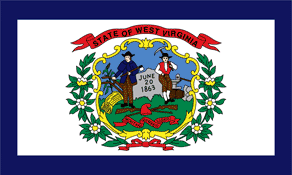West Virginia State Standards for Language Arts: Grade 2

Currently Perma-Bound only has suggested titles for grades K-8 in the Science and Social Studies areas. We are working on expanding this.
WV.RLA.S.2.1. Reading: Students will apply reading skills and strategies to inform, to perform a task and to read for literacy experience by identifying and using grade appropriate essential reading components (phonemic awareness, phonics, vocabulary, fluency, comprehension, and written application) and selecting a wide variety of literature and diverse media to develop independence as readers.
RLA.O.2.1.1. Identify and practice basic elements of phonetic analysis:
RLA.O.2.1.1.a. Syllabication
RLA.O.2.1.1.b. Diphthongs
RLA.O.2.1.1.c. Digraphs
RLA.O.2.1.1.d. Variant vowel sounds such as r-controlled
RLA.O.2.1.2. Identify and practice grade level appropriate sight words and reading vocabulary (e.g., high frequency words, homonyms, homophones, multiple meaning words, synonyms, antonyms).
RLA.O.2.1.3. Identify and practice basic elements of structural analysis to decode unknown words (e.g., syllables, prefixes, suffixes, root words, compound words, spelling patterns, contractions).
RLA.O.2.1.4. Apply explicitly taught vocabulary words in oral and written experiences.
RLA.O.2.1.5. Describe a purpose for reading:
RLA.O.2.1.5.a. For information
RLA.O.2.1.5.b. For pleasure
RLA.O.2.1.5.c. To understand specific viewpoints
RLA.O.2.1.5.d. To follow directions
RLA.O.2.1.6. Read familiar stories, poems and passages with fluency:
RLA.O.2.1.6.a. Appropriate rate
RLA.O.2.1.6.b. Accuracy
RLA.O.2.1.6.c. Prosody
RLA.O.2.1.7. Use a variety of context clues to determine word meanings (e.g., prior knowledge, read ahead, reread).
RLA.O.2.1.8. Use meaning clues to aid comprehension and make predictions about content (e.g., pictures, picture captions, title, cover, heading).
RLA.O.2.1.9. Read second grade instructional level texts and use self-correction strategies (e.g., decoding, searching for cues, rereading).
RLA.O.2.1.10. Respond to both literal and interpretive comprehension questions after reading a short story selection that is developmentally appropriate.
RLA.O.2.1.11. Use literary and informational texts to summarize, determine story elements, determine cause and effect, compare and contrast, predict, sequence, draw conclusions, describe characters and provide main idea and support details.
RLA.O.2.1.12. Infer the author's purpose in literacy and information text:
RLA.O.2.1.12.a. To persuade
RLA.O.2.1.12.b. To entertain
RLA.O.2.1.12.c. To inform
RLA.O.2.1.13. Make the connections between characters or simple events in a literary work to own life or other cultures (e.g., events, characters, conflicts, themes).
RLA.O.2.1.14. Recognize genre in literary texts:
RLA.O.2.1.14.a. Fairy tales
RLA.O.2.1.14.b. Folk tales
RLA.O.2.1.14.c. Poems
RLA.O.2.1.14.d. Fables
RLA.O.2.1.14.e. Fantasies
RLA.O.2.1.14.f. Biographies
RLA.O.2.1.14.g. Short stories
RLA.O.2.1.14.h. Chapter books
RLA.O.2.1.14.i. Plays and informational texts
RLA.O.2.1.14.j. Magazines
RLA.O.2.1.14.k. Textbooks
RLA.O.2.1.14.l. Electronic resources
RLA.O.2.1.14.m. Reference materials
RLA.O.2.1.15. Use reading skills and strategies to understand a variety of information resources to support literacy learning (e.g., environmental print, written directions, signs, captions, electronic resources, labels).
RLA.O.2.1.16. Increase the amount of independent reading to build background knowledge, expand vocabulary and comprehend literary and informational text.
WV.RLA.S.2.2. Writing: Students will apply writing skills and strategies to communicate effectively for different purposes by using the writing process applying grammatical and mechanical properties in writing and selecting and evaluating information for research purposes.
RLA.O.2.2.1. Demonstrate proper manuscript and begin use of cursive writing techniques:
RLA.O.2.2.1.a. Posture
RLA.O.2.2.1.b. Paper placement
RLA.O.2.2.1.c. Pencil grip
RLA.O.2.2.1.d. Letter formation
RLA.O.2.2.1.f. Spacing
RLA.O.2.2.2. Write correctly formed and punctuated simple sentences (e.g., declarative, interrogative, exclamatory).
RLA.O.2.2.3. Develop a story with proper sequence (e.g., beginning - middle - end, containing a main idea, supporting details).
RLA.O.2.2.4. Construct a story using the five-step writing process:
RLA.O.2.2.4.a. Pre-writing
RLA.O.2.2.4.b. Draft
RLA.O.2.2.4.c. Revise
RLA.O.2.2.4.d. Edit
RLA.O.2.2.4.e. Publish
RLA.O.2.2.5. Use conventions of spelling in written composition (e.g., spell high frequency words from appropriate grade level lists, use letter/sound relationships to spell independently, spell irregular words, transition from phonetic to conventional spelling).
RLA.O.2.2.6. Use conventions of capitalization in written composition (e.g., titles, initials, titles of written works, greeting and closing of a letter).
RLA.O.2.2.7. Use conventions of punctuation in written composition (e.g., period in abbreviations, initials, commas in dates, greeting and closing of letter, separate city-state-country, separate items in a list, apostrophe in contractions and singular possessives).
RLA.O.2.2.8. Use grammar in written composition (e.g., correct subject/verb agreement, simple adjectives, adverbs).
RLA.O.2.2.9. Compose in a variety of forms and genres for different audiences (e.g., journals, letters, stories, simple reports).
RLA.O.2.2.10. Alphabetize to the second letter and use simple guidewords.
RLA.O.2.2.11. Use a variety of sources to gather information to communicate with others (e.g., dictionaries, informational books, pictures, charts, indexes, videos, television programs, guest speakers, graphic organizers).
WV.RLA.S.2.3 Listening, Speaking and Media Literacy: Students will apply listening, speaking and media literacy skills and strategies to communicate with a variety of audiences and for different purposes.
RLA.O.2.3.1. Listen, recite and respond to familiar stories, poems and songs (e.g., retell in sequence, relate information to own life, describe character, setting, plot, engage in creative dramatics, imagine beyond the story).
RLA.O.2.3.2. Describe the main idea or intended messages in a variety of visual media (e.g., pictures, cartoons, weather reports, newspaper photos, visual narratives).
RLA.O.2.3.3. Access media tools to create an oral or visual presentation (e.g., desktop publishing, electronic resources, photos).